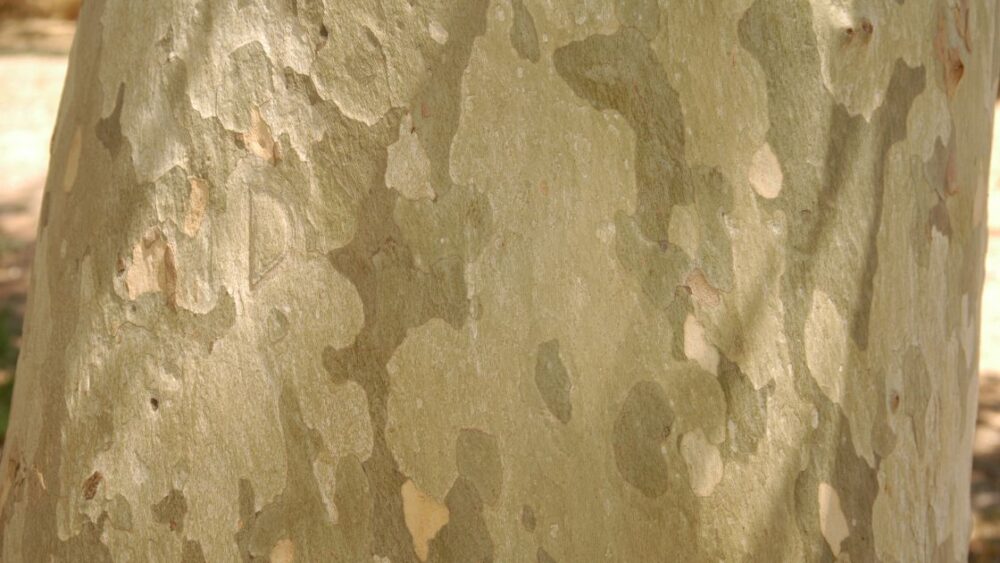
When we think of majestic trees that grace our landscapes, sycamore trees often come to mind. With their grand stature and captivating appearance, these trees have intrigued humans for centuries. In this article, we embark on a journey to uncover fascinating sycamore tree facts that will deepen our appreciation for these remarkable giants.
Historical Significance and Cultural References
Throughout history, sycamore trees have held significant cultural and symbolic value. In ancient mythology and folklore, they were often associated with divine beings or revered as sacred trees. References to sycamores can also be found in literature, where they serve as powerful symbols of strength, resilience, and wisdom. From ancient civilizations to modern times, these trees have left an indelible mark on human culture.
Sycamore Tree Basics
To truly understand sycamore trees, let us delve into their basic characteristics. Sycamores belong to the genus Platanus and encompass several species, including the American sycamore (Platanus occidentalis) and the London plane tree (Platanus x acerifolia). These trees are native to various parts of the world and thrive in temperate climates. Sycamores make a grand statement in any landscape with their broad canopies and sturdy trunks.
Browse our Affiliate Products
Distinctive Features

One cannot help but be captivated by the unique features that set sycamore trees apart. Their most notable characteristic is their striking bark. The mature bark displays an intriguing mosaic of colors, ranging from creamy white to shades of gray, brown, and green. This distinctive pattern is a result of the tree shedding its outer bark in irregular patches.
Additionally, sycamore leaves are large, palmate-shaped, and have a vibrant green hue, providing a lush canopy in the warmer months. As autumn approaches, the leaves transform into a stunning tapestry of gold, orange, and brown, creating a breathtaking display, but be weary when planting since they are perennials and tend to lose all their leave in the winter.
For more information on sycamore trees, check out these articles below.
- Sycamore: Pros, Cons, and Cautions of The Great Deciduous Shade Tree
- Is it Okay to Mulch Sycamore Leaves on a Lawn With a Mower?
Life Cycle and Growth
Understanding the life cycle of sycamore trees unveils their fascinating journey. It all begins with the germination of sycamore seeds, which are encased in spherical fruit clusters commonly known as “buttonballs.” As the seeds take root and sprout, sycamore trees embark on their growth trajectory. They exhibit a remarkable growth rate, and within a few decades, they can reach towering heights of 80 to 100 feet or more.
Sycamores have a long lifespan, with some individuals surviving for several hundred years, standing as living testaments to the passage of time. Often with their old age, they are prone to becoming brittle and cracking at different times of the year. This is especially true during the summer and rainy seasons. It’s not uncommon for huge limbs to break off and can be dangerous if they are near housing and sensitive areas.
Regardless, these trees provide great shade and protection for wildlife and humans alike. This is why they are attractive because they grow fast, but they can become a job when the winter times comes due to the leave dropping each year.
Ecological Significance
Sycamore trees play a vital role in their ecosystems, offering numerous ecological benefits. Their dense foliage provides shade and shelter for a wide variety of wildlife, including birds, mammals, and insects. Sycamores are particularly important for cavity-nesting birds, such as owls and woodpeckers, which rely on the natural hollows that form within the trees’ trunks.
In addition to their role in supporting wildlife, sycamore trees contribute to soil conservation by preventing erosion and stabilizing riverbanks. Their extensive root systems help regulate water levels, making them essential components of riparian habitats.
Practical Uses and Applications
Throughout history, sycamore trees have been valued for their practical applications. The wood of sycamore trees is highly regarded for its durability and versatility. It has been utilized in various woodworking projects, including furniture, cabinetry, and veneers. Additionally, craftsmen have long appreciated the unique patterns and textures in sycamore wood, using it to create decorative items, musical instruments, and even fine art.
Beyond woodworking, sycamore trees have also been recognized for their medicinal properties. Traditional healers have utilized different parts of the tree, including the bark and leaves, for their therapeutic benefits. Sycamore preparations have been used to treat ailments such as skin conditions, respiratory issues, and digestive disorders. While modern medicine has progressed, the historical significance of sycamores in herbal remedies remains an intriguing aspect of their practical applications.
Interesting Sycamore Tree Facts
Now, let’s uncover some lesser-known facts that add to the allure of sycamore trees:
- Witness the transformation: The shedding of the outer bark on sycamore trees creates a striking contrast between the smooth, pale inner bark and the dark, rough patches.
- Natural air purifiers: Sycamores are known for their ability to absorb pollutants, making them valuable contributors to urban air quality.
- Survival against pests: Sycamore trees possess a natural resistance to many common tree pests and diseases, making them hardy and resilient in various environments.
- Sycamores on the silver screen: These majestic trees have often been chosen as iconic symbols of grandeur in films, adding a touch of enchantment to the cinematic experience.
- Nutritious buttonballs: While the buttonball fruits of sycamores are not commonly consumed by humans, they provide a source of food for birds and small mammals during the winter months.
- A tree with a sweet tooth: Sycamore trees produce sap that can be harvested and used to make a form of maple syrup, although it is less commonly done compared to other tree species.
- Exploring international sycamores: Sycamore trees can be found in various countries worldwide, including the United States, Europe, Asia, and Africa, each with its own unique species and cultural significance.
Final Thoughts
Sycamore trees captivate us with their intriguing characteristics, rich cultural references, and ecological contributions. From their awe-inspiring bark to their beneficial impact on wildlife and the environment, these majestic giants continue to hold our fascination. As we uncover the fascinating trivia and insights surrounding sycamore trees, we gain a deeper appreciation for their significance in both natural and human landscapes. So, the next time you encounter a sycamore tree, take a moment to admire its beauty and contemplate the wonders it holds within its towering presence.












